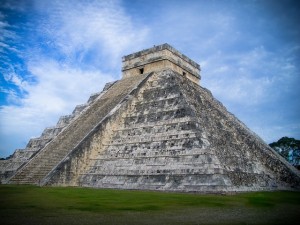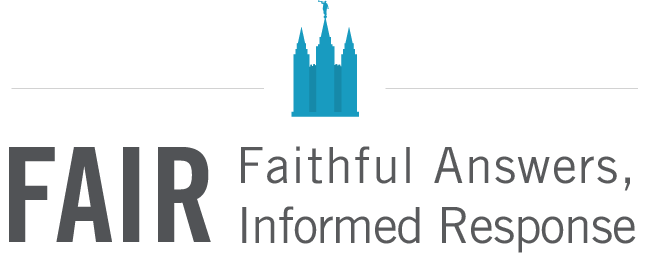Podcast: Download (27.1MB)
Subscribe: RSS
 Did the Mayans prophesy that the world would end in 2012? What is the probability that the Mayans are direct descendants of Lehi? Were the Lamanites and Nephites located in North America? What did Joseph Smith say about the location of Zarahemla? What about Zelph? Where there horses in the Americas before Columbus? Were there two hills Cumorah? Is there archeological evidence that proves the Book of Mormon is true?
Did the Mayans prophesy that the world would end in 2012? What is the probability that the Mayans are direct descendants of Lehi? Were the Lamanites and Nephites located in North America? What did Joseph Smith say about the location of Zarahemla? What about Zelph? Where there horses in the Americas before Columbus? Were there two hills Cumorah? Is there archeological evidence that proves the Book of Mormon is true?
Mark Alan Wright earned his BA in Anthropology at UCLA and his MA and PhD in Anthropology (with a subfield of specialization in Mesoamerican Archaeology) from UC Riverside. His dissertation is entitled “A Study of Classic Maya Rulership.” He regularly conducts research in Mexico, Guatemala, Honduras and Belize. Dr. Wright is Assistant Professor of Ancient Scripture at Brigham Young University
This is the first of a two-part episode. This recording is posted here by permission of K-Talk Radio. The opinions expressed in this interview do not necessarily represent the views of FAIR or The Church of Jesus Christ of Latter-day Saints.

Doctor Wright spends two minutes (beginning 39:25) supporting the common speculative supposition that the hill Cumorah in Palmyra, NY, is not the Hill Cumorah of the Book of Mormon, and that it was mistakenly called that by members of the Church. Please allow me to present five items of documentary evidence which indicate that it was Moroni, prior to the translation of the Gold Plates, who told Joseph Smith that Cumorah was the name of the hill in Palmyra,
Oliver Cowdery, Second Elder of the Church and Co-President with Joseph Smith, stated the following in 1831:
Following Joseph’s meeting with Moroni at Cumorah, one year before Joseph received the plates, Joseph told his parents that he had “taken the severest chastisement that I have ever had in my life.” Joseph said:
David Whitmer confirmed this in an interview in his later years when he stated:
Additionally, we read in Doctrine and Covenants:
Again, it is apparent that Moroni called the hill in Palmyra “Cumorah” before the book was translated.
Finally, supporting this is a quote from a sacred hymn, selected by Emma Smith and published in 1835. Emma Smith, wife of the Prophet, produced this under instructions and directions from the Lord. “And it shall be given thee, also, to make a selection of sacred hymns, as it shall be given thee, which is pleasing unto me, to be had in my church.” (D&C 25:1)
It appears to be clear from the documentary records of the Church, that it was Moroni who told Joseph Smith that the name of the hill in Palmyra was Cumorah, before he received the gold plates.
TheodoreB: Thanks for these references. This seems to provide some evidence that Moroni may have been the one to name the hill in New York “Cumorah.” However, it is somewhat hard to know what to make of all of these comments since many of them were recollections recorded long after the events occurred (Pratt’s autobiography was not published until 1874 and Lucy Mack Smith’s biography was published in 1853). And of course, it does not contradict the point made by Dr. Wright that the plates Joseph Smith received were not placed in the original hill Cumorah since Mormon 6:6 explicitly states that those plates were not put there. Moroni does not “seal up” his record until about 36 years later, but he does not tell us where. (See Moroni 10:2.) If Moroni or others started calling the hill in New York “Cumorah,” perhaps because it is a hill in which he placed records just as his father had done in another hill Cumorah, it is easy to see how people like David Whitmer could become confused and start to think that the New York hill is the location of the original Cumorah, even though the text of the Book of Mormon leads us to believe otherwise.
Steve,
Pratt’s autobiography was taken from his journals, which were recorded at the time of the event. Also, just because Lucy was older when she dictated this is no evidence that it is error. Long term memory actually improves with age. It is the short term memory that deteriorates. (I know, I am 74 🙂 ) Each of the first three items could be subject to doubt, if taken by themselves, but as all five are consistent, and there is no documentary opposing evidence, taken all together they make a very strong case.
I find quite humorous, the logic behind the speculation that Mormon 6:6 excludes Moroni from later burying the plates in the same hill. How could Mormon’s statement possibly exclude where his son would later bury the plates, after Mormon was dead? Likewise, how could Moroni write in the plates where he had buried them, after he had buried them?
As to Moroni calling a different hill Cumorah, this would have been deceptive, and angels cannot deceive (D&C 129:7). Also, I can’t believe that Moroni would even have let Joseph Smith misunderstand the location of the hill Cumorah. It was around the hill Cumorah where Moroni’s father, Mormon, and the remainder of his family, his friends, and his people, his entire civilization were annihilated. This is where lay the bones of his father, his family and his people. To Moroni, Cumorah was sacred, hallowed ground. It would be like Admiral Nimitz renaming Chesapeake Bay to Pearl Harbor.
TheodoreB: As I am sure you are aware, placing the Book of Mormon’s Cumorah in New York creates significant problems with respect to relative location of other landmarks, weather, archeological artifacts, etc. These problems can be obviated if the Cumorah of the last battle is in a different place. And it is no more deceptive of Moroni to call the hill in New York “Cumorah” than it is of those in Utah to name a river “Jordan” or a mountain “Nebo.” Naming new landmarks after old ones is a common practice. Of course, while not deceptive, it could certainly be confusing. But no one ever said an angel can’t be confusing.
With respect to the veracity of the documentary evidence, have you read Pratt’s journal to see if this account appears there? I’ve read the excerpt from Pratt’s autobiography and, while he may have used his journal to help him write his autobiography, it is not clear that this account comes directly from his journal. Even if it did, it does not indicate that the original hill Cumorah is the one that is in New York.
With respect to memory, as an attorney who frequently explores people’s memories by deposition and written documentation, and compares recollections of various sources in order to ascertain true facts, I do not find these recorded recollections to be definitive proof that there is only one hill Cumorah. All of them but Whitmer’s late recollections can be interpreted as referring to a new hill. And his late recollection could simply be wrong. With due respect, I am not convinced that the fact that a person is old should cause us to give greater weight to their memory of long-passed events.
Of course, it is possible that Moroni returned to the original hill Cumorah and buried the plates there. However, he does not say that he did and his father explicitly stated that the abridgment was not deposited at Cumorah and instead was given to Moroni. It seems strange to me that Mormon would make a point of saying that the abridgment was not placed in the hill Cumorah, and that later Moroni would return to place it there, but not tell us that, especially if the place was as sacred to him as you presume.
In short, I am willing to entertain the idea that there is only one hill Cumorah. But I don’t find the sources you have provided to compel such a conclusion. And I think it makes more sense to think there are two.
Steve,
As to the original source of the Pratt quote, his autobiography was actually written after his death by his son from all of the documents and publications his father left behind. As there is no other known account of Oliver’s Missouri address, it must therefore have been recorded by Pratt at the time. As I mentioned, any one of the first three accounts could be subject to doubt if taken be themselves, but the five documents of evidence combined, all being in harmony with each other, makes a fairly strong case.
Moroni buried the gold plates 36 years after his father gave them to him. Mormon’s comment that he had hidden the remainder of the records in Cumorah says nothing about where Moroni may or may not have buried them 36 years later, and is totally irrelevant to the issue.
I don’t believe that the text of the Book of Mormon requires Cumorah to be in Mesoamerica even if the Nephite saga in America began there, which I sincerely believe it did. I think that the concept that Cumorah must also be in Mesoamerica comes from the unwarranted assumption that the city of Lehi-Nephi is the same as the original city of Nephi. Within ten or fifteen years after the founding of the city of Nephi the Lamanites discovered them and the wars between them began (2 Nephi 5:34). Two hundred years after Lehi left Jerusalem, Jarom records that the wars had continued and that the Nephites and the Lamanites were scattered upon much of the face of the land (Jarom 1:5-9). After they had been in America for 300 years the more wicked part of the Nephites had been destroyed (Omni 1:5). The record does not indicate where the Nephite survivors were living by that time. The pattern throughout the Book of Mormon is that the Nephites were constantly fleeing and being driven northward by the Lamanites. By the time of King Benjamin 1st they may have been hundreds or even a thousand miles or more north of their original city of Nephi. This changes the possibilities as to where many subsequent events may have occurred.
Interesting comments TheodoreB. Thanks.
Typo correction: In my last post, second last sentence, I meant “King Mosiah 1st.”